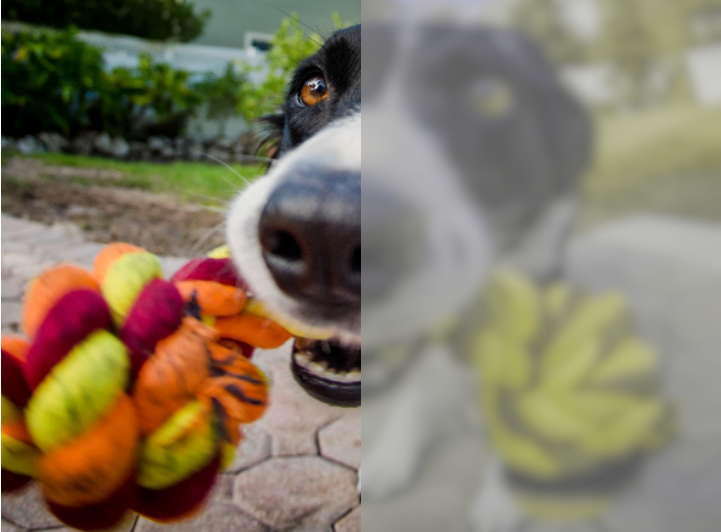Is everything in a dog’s world black and white? For years, it was believed that dogs could only see shades of gray. However, new research has debunked this myth, revealing that while dogs can’t see the same colors as humans, they can still perceive some colors.
What Is Color Blindness?
Color blindness, also known as color deficiency, is a condition where individuals have difficulty distinguishing certain colors. This is often due to abnormalities in the cones, the color-detecting molecules, in the retina. While humans with red-green color blindness can still perceive yellow and blue, objects that are red may appear gray or brown to them.
Myths About Dogs Seeing Colors
The misconception that dogs see only in black and white can be attributed to early dog fancier and writer, Will Judy. In the 1937 manual, “Training the Dog,” he claimed that dogs had poor vision and could only perceive general outlines and shapes in varying shades of black and gray. However, this claim lacked substantial evidence.
Are Dogs Color Blind or Spectrum Challenged?
Recent studies have revealed that there are differences in the eye structure between humans and dogs. Dogs’ eyes have adapted to see well in the dark and detect movement as they were originally nocturnal hunters. Dogs have more rods than cones in their retina, which affects their color perception. While humans are trichromatic, with three types of cones for color perception, dogs are dichromatic and have only two types of cones.
So, Can Dogs See Colors Like We Can?
According to research conducted by Jay Neitz, a scientist at the Neitz Color Vision Lab, dogs’ color vision is similar to that of a person with red-green color blindness. Dogs can perceive yellow and blue, as well as combinations of these colors. As a result, their world appears grayish-brown, with certain colors appearing as different shades of this hue.
What Does This Mean to You and Your Dog?
Understanding how dogs perceive color can help you choose products and toys that suit their visual abilities. If you want to engage your dog with toys, opt for those in blue and yellow hues, as these colors are more visible to them. For example, many dogs go crazy over yellow tennis balls while showing less interest in pink or red ones. When playing fetch outdoors, avoid using red toys, as they may blend in with the grass.
By catering to your dog’s color perception, you can enhance their playtime and training experiences. So, next time you’re picking out a toy or training equipment, consider the colors that will catch your dog’s attention and make their world a little more vibrant.
Frequently Asked Questions
Q: Can dogs see color like humans?
A: Dogs’ color vision is similar to that of a person with red-green color blindness. They can perceive yellow and blue, but their color perception is limited compared to humans.
Q: Why do dogs prefer certain colored toys?
A: Dogs are more attracted to toys that are in hues they can see, such as blue and yellow. These colors stand out more to them and are easier to discern.
Q: How can I choose toys that my dog can see better?
A: Opt for toys in blue and yellow shades. Dogs find these colors more visually appealing and can easily distinguish them from their surroundings.
Conclusion
While dogs may not see the world in the same vibrant colors as humans, they do have the ability to perceive certain hues. By understanding their color perception, we can make informed choices when it comes to selecting toys and other products for our canine companions. So, go ahead and embrace the blue and yellow hues that are more visible to your furry friend, and make their world a little brighter!
For more information on products and resources for your furry friend, visit Pawsoha.
